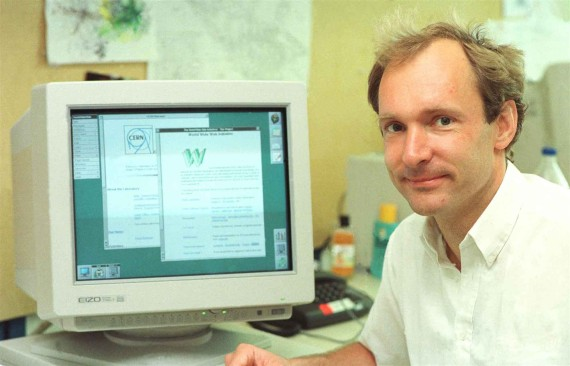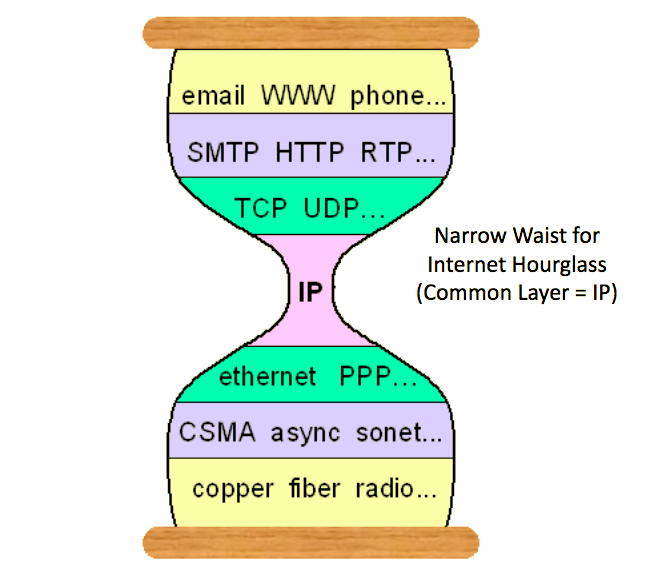After years of being left for dead, SQL today is making a resurgence. How come? And what impact will this have on the information neighborhood?
(Update: # 1 on Hacker News! Check out the discussion here.)
(Update 2: TimescaleDB is employing! Open positions in Engineering, Marketing/Evangelism, and Office Management. Interested?)

Considering that the dawn of computing, we have actually been collecting greatly growing quantities of information, constantly asking more from our data storage, processing, and analysis innovation. In the past years, this triggered software application developers to cast aside SQL as an antique that could not scale with these growing information volumes, resulting in the increase of NoSQL: MapReduce and Bigtable, Cassandra, MongoDB, and more.
Yet today SQL is resurging. All of the significant cloud suppliers now offer popular handled relational database services: e.g., Amazon RDS, Google Cloud SQL, Azure Database for PostgreSQL(Azure introduced just this year). In Amazon’s own words, its PostgreSQL- and MySQL-compatible database Aurora database product has actually been the “ fastest growing service in the history of AWS“. SQL interfaces on top of Hadoop and Glow continue to flourish. And just last month, Kafka released SQL support. Your humble authors themselves are designers of a new time-series database that completely accepts SQL. In this post we analyze why the pendulum today is swinging back to SQL, and what this implies for the future of the information engineering and analysis neighborhood.
Part 1: A New Hope
To comprehend why SQL is picking up, let’s start with why it was created in the first location.

story starts at IBM Research study in the early 1970s, where the relational database was born. At that time, inquiry languages depended on complex mathematical reasoning and notation. Two freshly minted PhDs, Donald Chamberlin and Raymond Boyce, were impressed by the relational data model but saw that the query language would be a significant bottleneck to adoption. They set out to create a new question language that would be (in their own words): “ more accessible to users without official training

vs SQL(c )( source)Believe about this. Method before the Internet, prior to the Personal Computer system, when the programs language C was initially being presented to the world, 2 young computer scientists understood that, “ much of the success of the computer system industry depends on developing a class of users besides qualified computer specialists.” They wanted a query language that was as easy to read as English, and that would also include database administration and control.
The outcome was SQL, initially introduced to the world in 1974. Over the next few years, SQL would show to be profoundly popular. As relational databases like System R, Ingres, DB2, Oracle, SQL Server, PostgreSQL, MySQL (and more) took over the software industry, SQL ended up being established as the preeminent language for communicating with a database, and ended up being the lingua franca for a significantly crowded and competitive ecosystem.
(Unfortunately, Raymond Boyce never had an opportunity to witness SQL’s success. He passed away of a brain aneurysm 1 month after offering among the earliest SQL presentations, just 26 years of age, leaving behind a wife and young daughter.)
For a while, it appeared like SQL had actually successfully satisfied its mission. However then the Internet took place.
Part 2: NoSQL Strikes Back
While Chamberlin and Boyce were establishing SQL, what they didn’t realize is that a second group of engineers in California were working on another budding job that would later commonly proliferate and threaten SQL’s existence. That project was, and on October 29, 1969, it was born. Some of the creators of ARPANET, which eventually evolved into today’s Web( source)
But SQL was really fine until another engineer appeared and created the

( source)Like a weed, the Web and Web thrived, enormously interrupting our world in many ways, but for the data community it created one particular headache: new sources generating information at much higher volumes and speeds than in the past.
As the Internet continued to grow and grow, the software application community found that the relational databases of that time could not manage this brand-new load. There was a disruption in the force, as if a million databases sobbed out and were suddenly overloaded.
Then two brand-new Web giants made breakthroughs, and developed their own distributed non-relational systems to assist with this brand-new onslaught of data: MapReduce ( published 2004)and Bigtable( published 2006)by Google, and Eager beaver( published 2007)by Amazon. These influential papers caused even more non-relational databases, consisting of Hadoop(based on the MapReduce paper, 2006), Cassandra(greatly influenced by both the Bigtable and Eager beaver papers, 2008)and MongoDB (2009). Due to the fact that these were brand-new systems largely written from scratch, they likewise eschewed SQL, leading to theincrease of the NoSQL motion.And boy did the software developer neighborhood eat up NoSQL, accepting it probably a lot more broadly than the initial Google/Amazon
authors intended. It’s simple to comprehend why: NoSQL was brand-new and glossy; it assured scale and power; it appeared like the quick course to engineering success. Then the problems began appearing. Traditional software designer tempted by NoSQL. Don’t be this guy.

Each NoSQL database provided its own unique query language, which suggested: more languages to learn(and to teach to your colleagues); increased problem in linking these databases to applications, resulting in tons of fragile glue code; an absence of a 3rd party ecosystem, requiring business to establish their own functional and visualization tools. These NoSQL languages, being brand-new, were likewise not totally developed. There had actually been years of work in relational databases to add required functions to SQL (e.g., Signs up with); the immaturity of NoSQL languages indicated more intricacy was needed at the application level. The absence of JOINs also led to denormalization, which caused information bloat and rigidness. Some NoSQL databases included their own “SQL-like “query languages, like Cassandra’s CQL. However this frequently made the problem even worse. Using an interface that is practically identical to
something more common really created more psychological friction: engineers didn’t understand exactly what was supported and what wasn’t. SQL-like inquiry languages resemble the Star Wars Vacation Special.

Part 3: Return of the SQL
Initially seduced by the dark side, the software application community began to see the light and return to SQL.
Came the SQL interfaces on top of Hadoop (and later on, Glow), leading the market to “back-cronym” NoSQL to “Not Only SQL” (yeah, great try).
Came the rise of NewSQL: brand-new scalable databases that totally accepted SQL. H-Store(published 2008)from MIT and Brown scientists was among the very first scale-out OLTP databases. Google again blazed a trail for a geo-replicated SQL-interfaced database with their very first Spanner paper ( released 2012)( whose authors consist of the original MapReduce authors), followed by other pioneers like CockroachDB ( 2014). At the exact same time, the PostgreSQL community began to revive, including vital enhancements like a JSON datatype (2012 ), and a potpourri of brand-new features in PostgreSQL 10: better native support for separating and replication, full text search support for JSON, and more (release slated for later on this year). Other companies like CitusDB () and yours genuinely ( TimescaleDB, launched this year)found brand-new ways to scale PostgreSQL for specialized information workloads. In fact, our journey establishing TimescaleDB closely mirrors the course the industry has actually taken. Early internal variations of TimescaleDB included our own SQL-like inquiry language called “ioQL.”Yes, we too were lured by the dark side: building our own inquiry language felt effective. However while it appeared like the easy course, we quickly recognized that we ‘d need to do a lot more work: e.g., deciding syntax, developing various connectors, educating users, etc. We likewise found ourselves continuously looking up the appropriate syntax to inquiries that we might already reveal in SQL, for an inquiry language we had written ourselves! One day we recognized that developing our own question language made no sense. That the secret was to accept SQL. Which was among the best design choices we have actually made. Instantly a whole brand-new world opened. Today, although we are just a 5 month old database, our users can use us in production and get all type of wonderful things from package: visualization tools(Tableau), ports to common ORMs, a variety of tooling and backup options, an abundance of tutorials and syntax descriptions online, and so on. Don’t take our word for it. Take Google’s. Google has actually plainly been on the leading edge

of data engineering and facilities for over a years now. It behooves us to pay very close attention to exactly what they are doing. Take a look at Google’s 2nd major Spanner paper, launched
simply four months ago( Spanner: Ending Up Being a SQL System, Might 2017), and you’ll discover that it boosts our independent findings. For
of SQL created issues(focus in all quotes listed below ours):
“real” >”While these systems supplied some of the advantages of a database system, they did not have many traditional database functions that application designers often depend on. A key example is a robust question language, suggesting that designers had to write complex code to procedure and aggregate the data in their applications. As an outcome, we chose to turn Spanner into a complete featured SQL system, with query execution securely integrated with the other architectural functions of Spanner (such as strong consistency and global replication).”
Later on in the paper they even more capture the reasoning for their shift from NoSQL to SQL:
The initial API of Spanner offered NoSQL approaches for point lookups and variety scans of specific and interleaved tables. While NoSQL approaches provided an easy course to releasing Spanner, and continue to work in simple retrieval circumstances, SQL has actually provided substantial extra worth in revealing more intricate data access patterns and pressing computation to the data.
The paper also describes how the adoption of SQL doesn’t stop at Spanner, but in fact extends throughout the rest of Google, where several systems today share a typical SQL dialect:
Spanner’s SQL engine shares a typical SQL dialect, called “Standard SQL “, with several other systems at Google consisting of internal systems such as F1 and Dremel(amongst others)
, and external systems such as BigQuery … For users within Google, this decreases the barrier of working across the systems. A designer or information analyst who composes SQL versus a Spanner database can transfer their understanding of the language to Dremel without concern over subtle distinctions in syntax, NULL handling, and so on
. The success of this approach promotes itself. Spanner is currently the “source of fact” for major Google systems, consisting of AdWords and Google Play, while “Potential Cloud clients are overwhelmingly interested in using SQL.”
Considering that Google assisted start the NoSQL movement in the first place, it is quite impressive that it is accepting SQL today. (Leading some to just recently wonder: “ Did Google Send the Big Data Market on a 10 Year Head Phony?“.)
Exactly what this implies for the future of data: SQL as the universal interface
In computer system networking, there is an idea called the “ narrow waist,”describing a universal user interface.
This idea emerged to resolve an essential problem: On any given networked gadget, think of a stack, with layers of hardware at the bottom and layers of software on top. There can exist a range of networking hardware; similarly there can exist a variety of software application and applications. One needs a way to make sure that no matter the hardware, the software can still link to the network; and no matter the software application, that the networking hardware knows how to handle the network demands.

In networking, the function of the universal interface is played by Internet Protocol (IP), functioning as a linking layer between lower-level networking procedures created for local-area network, and higher-level application and transportation procedures. ( Here’s one good explanation.) And (in a broad oversimplification), this universal interface became the lingua franca for computers, enabling networks to adjoin, gadgets to communicate, and this “network of networks” to become today’s rich and diverse Internet.
Our company believe that SQL has actually ended up being the universal user interface for data analysis.
We reside in a period where data is becoming “the world’s most important resource” ( The Economic expert, Might 2017 ). As a result, we have actually seen a Cambrian surge of specialized databases (OLAP, time-series, document, chart, etc.), data processing tools (Hadoop, Spark, Flink), data buses (Kafka, RabbitMQ), etc. We also have more applications that have to depend on this information infrastructure, whether third-party data visualization tools (Tableau, Grafana, PowerBI, Superset), web frameworks (Bed rails, Django) or customized data-driven applications.
Like networking we have a complicated stack, with facilities on the bottom and applications on top. Usually, we wind up composing a lot of glue code to make this stack work. But glue code can be breakable: it has to be preserved and tended to.
What we require is an interface that allows pieces of this stack to interact with one another. Preferably something currently standardized in the market. Something that would permit us to swap in/out numerous layers with very little friction.
That is the power of SQL. Like IP, SQL is a universal interface.
SQL is in truth much more than IP. Because information also gets evaluated by human beings. And true to the purpose that SQL’s creators at first designated to it, SQL is understandable.
Is SQL best? No, however it is the language that most of us in the neighborhood understand. And while there are currently engineers out there working on a more natural language oriented user interface, exactly what will those systems then link to? SQL.
There is another layer at the really top of the stack. And that layer is us.
SQL is Back
SQL is back. Not simply because writing glue code to kludge together NoSQL tools is irritating. Not just since re-training labor forces to learn a myriad of new languages is hard. Not simply due to the fact that standards can be an excellent thing.
However also due to the fact that the world is filled with information. It surrounds us, binds us. Initially, we depend on our human senses and sensory nerve systems to process it. Now our software application and hardware systems are likewise getting clever adequate to assist us. And as we collect increasingly more data to make much better sense of our world, the intricacy of our systems to store, process, examine, and imagine that information will only continue to grow as well.

Either we can live in a world of breakable systems and a million interfaces. Or we can continue to welcome SQL. And bring back balance to the force.
Like this post? Please advise and/or share.
And if you ‘d like to find out more about TimescaleDB, please examine out our GitHub(stars constantly appreciated), and please let us understand how we can assist.
Suggested reading for those who had actually prefer to discover more about the history of databases (aka curriculum for the future TimescaleDB Introduction to Databases Class):
Why SQL is beating NoSQL, and what this suggests for the future of data was initially released in Timescale on Medium, where people are continuing the conversation by highlighting and reacting to this story.
Source
https://blog.timescale.com/why-sql-beating-nosql-what-this-means-for-future-of-data-time-series-database-348b777b847a
 #Bizwhiznetwork.com Innovation ΛI |Technology News
#Bizwhiznetwork.com Innovation ΛI |Technology News



